SICOT News
OSTEC 2015 - Orthopaedic Surgery and Trauma Experts Conclave
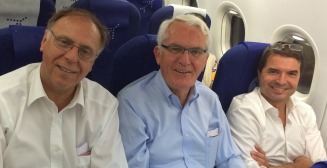 Pierre Hoffmeyer & James Waddell & Peter Biberthaler SICOT Active Members - Geneva, Switzerland & Toronto, Canada & Munich, Germany |
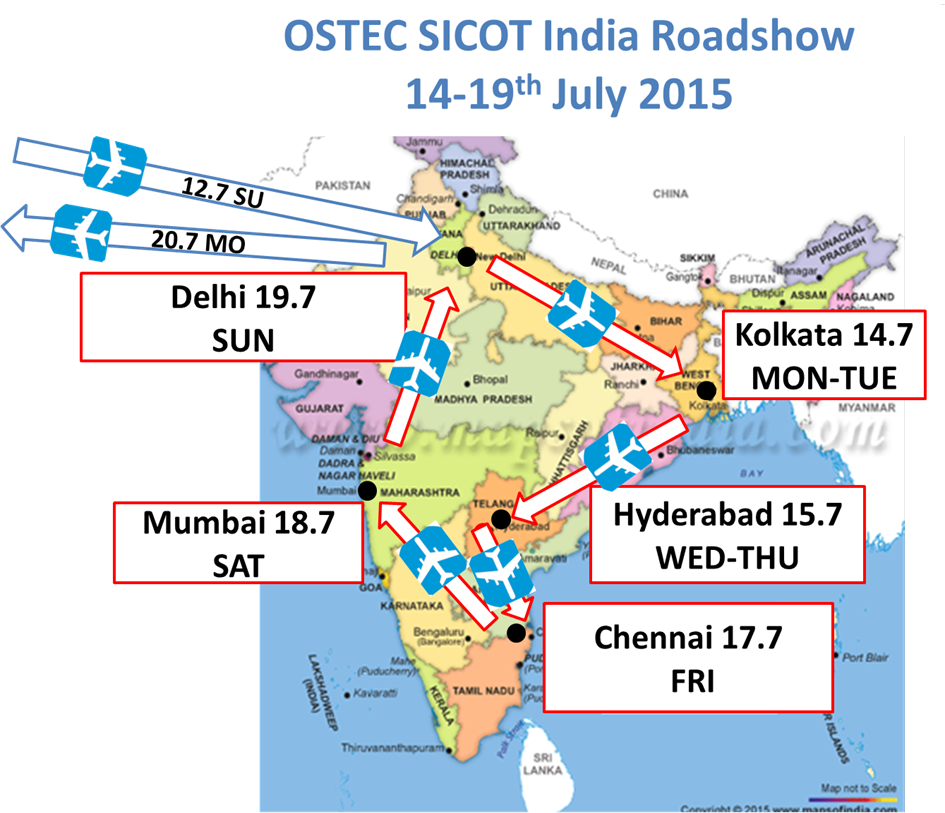
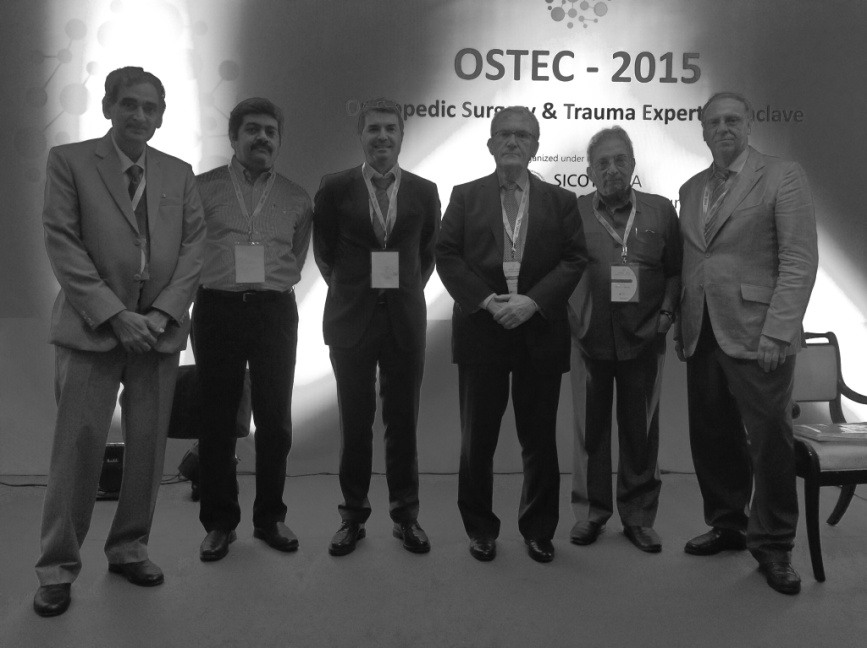 Ashok Johari, Lalit Maini, Peter Biberthaler, James Waddell, DD Tanna, Pierre Hoffmeyer |
On 2 April 2015, we received an e-mail from Professor Ashok Johari. It was a proposal to participate in a series of lectures to be given in five major cities of India during a period extending from 13 to 19 July. These lectures were under the auspices of the SICOT India Foundation and were sponsored by Pharmasquire. Indeed, it is not often in the life of an orthopaedic surgeon that one receives an invitation to participate in an educational event of this magnitude. The decision was easy, of course: a resounding yes! What an honour to be invited to participate in such a travelling round of conferences euphemistically called a “Road Show” by Ashok Johari. A quick check of the agenda, a reshuffle of various meeting dates, and a rescheduling of some surgeries did the trick, thanks to our efficient secretarial staff and to the understanding and support of our families.
The chosen travel companions were Professors James Waddell from Toronto, Peter Biberthaler from Munich, and Pierre Hoffmeyer from Geneva. Prof Johari asked us to send him our preferences as to the content and topic of the talks we were meant to give. Things turned out to our satisfaction. Jim Waddell took over the topic of the fractured neck of femur, Peter Biberthaler covered fractures and dislocations of the elbow and Pierre Hoffmeyer presented proximal humerus fractures. Each of us was asked to present a conference and to discuss a series of cases which allowed for good interaction with the members of the audience. We were then asked to participate in two panel discussions led by the local surgeons, interactively with the audience, on the general topics of upper and lower extremity fractures.
The programme started at 10:00 each morning in all five cities (Kolkata, Hyderabad, Chennai, Mumbai, and Delhi). Peter Biberthaler spoke comprehensively about dislocations and fractures around the elbow and after his conference presented cases to be discussed. An Audience Response System (ARS) was in place so that members of the audience could participate in the discussion by voting on multiple choice questions concerning the presented cases. This always gave rise to heated discussions. After a short tea break the programme continued with a presentation on fractures of the humeral head given by Pierre Hoffmeyer. This was followed by case discussions and again the ARS was used. After the two specific conferences and case discussions, a general discussion on trauma of the upper extremity took place, led by the local hosts and where the foreign panelists were asked to actively participate giving opinions on all presented cases. Lively interaction with the audience took place during these presentations.
In the afternoon session, after an excellent lunch-buffet, the programme continued with Jim Waddell’s lecture on fractures of the femoral neck, also followed by case presentations and ARS questions. The meeting continued after tea by a conference from a local faculty member usually dealing with a specific lower extremity trauma topic. The meeting closed at 17:30 on a discussion of cases with the foreign faculty panel and case presentations from the local host faculty.
The local hosts were well renowned and celebrated Indian colleagues and were integrated into the event bringing a local flavour to the meeting. In each city a conference and a case presentation session was led by one of the Indian Professors. In Kolkata, Prof John Mukhopadhaya gave a conference on fractures of the proximal tibia and led discussions along with Prof Arindam Banerjee on trauma to the lower extremities. In Hyderabad we were joined by Prof N.S. Laud who gave a masterful conference on the approaches to the treatment of intertrochanteric fractures and also together with Prof Arindam Banerjee, led the discussion on trauma to the lower extremity. In Chennai, Prof Laud gave his lecture on intertrochanteric (ITT) fractures and with Prof R.H. Govardhan led a discussion on complex trauma situations of the lower extremity. In Mumbai, Prof Tanna presented a lecture on ITT fractures and with Prof Laud animated a discussion on cases of major lower extremity trauma. Our final destination was in Delhi where Prof Tanna lectured on ITT and with Dr Lalit Maini organised a discussion centered on case studies involving lower extremity trauma.
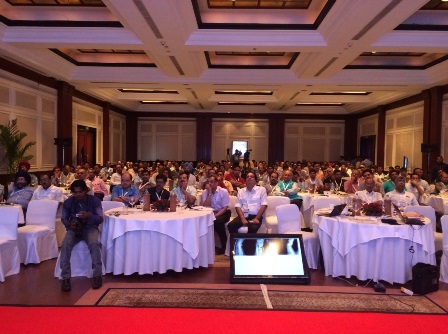 The conference venues and accommodations were well adapted to the event, i.e. large rooms, seating more than 250 were always on hand. The electronics available functioned flawlessly, beamers delivered good quality images, videos ran well and the audio worked satisfactorily.
The conference venues and accommodations were well adapted to the event, i.e. large rooms, seating more than 250 were always on hand. The electronics available functioned flawlessly, beamers delivered good quality images, videos ran well and the audio worked satisfactorily.
The topics were well adapted to the public of senior orthopaedic surgeons and the interactivity worked well with many questions asked, and opinions emitted.
The team of visiting faculty functioned extremely well with no diverging mind sets and a good unity in the responses; it is of major importance that the team functions well seeing the length of the conference and the close relationships that develop in a common activity where to a great extent success is dependant on good camaraderie.
The Indian faculty was well chosen with competent and authoritative masters presenting cases of high interest to the participants as these type of cases are more in accord with their daily experience than some of the cases presented by the foreign faculty. Neglected complex cases presenting infected non-unions are fairly frequent occurrences for an Indian orthopaedic surgeon with an established practice. In a more Western setting these types of cases are relatively rare and they require a high degree of analytical thinking, surgical know how and clinical wisdom to be able to find a solution.
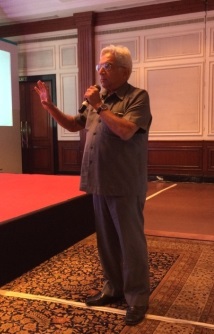 DD Tanna | 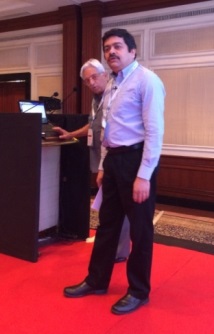 Lalit Maini | 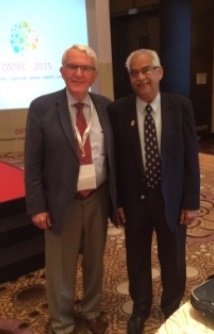 James Waddell and NS Laud |
The interaction between the foreign faculty and the local faculty went extremely well. On a personal level the opportunity to interact with high level professionals was a rare privilege indeed! At times, however, on the stage during conference, the strongly expressed opinions of some of the local faculty tended to overrule the messages and ideas of the foreign faculty. A typical example was the debate on the treatment of intertrochanteric fractures where the mainstream of primary treatment today, in Western practice at least, is certainly fixation (Nail or Sliding screw) and not prosthetic replacement. We do understand, however, that each region has its ideas and philosophies but clearly in this case the message to the participants needs to be fixation and not replacement. Poor bone quality, implant costs, or non-availability of some equipment such as image intensifiers might be a good reason to promote prosthetics but in that case this reason must be clearly stated to the participants.
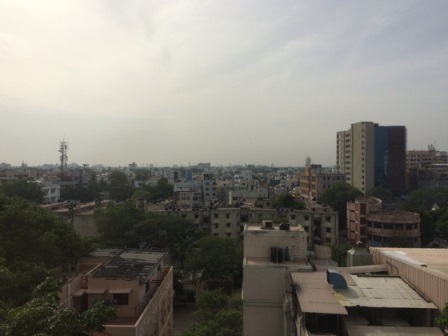 Chennai | 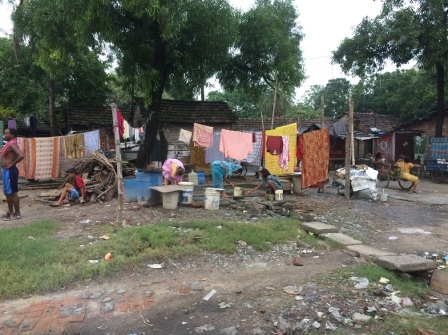 Kolkata |
On the touristic side, the scientific programme was very busy and we were not able to visit much of the cities we traversed during the Road Show. But then, this clearly was not the goal. Instead, we did meet with a great many Indian colleagues and this made the trip a truly exceptional experience and the best way to begin to understand this huge country of 1.27 billion inhabitants and to feel its pulse.
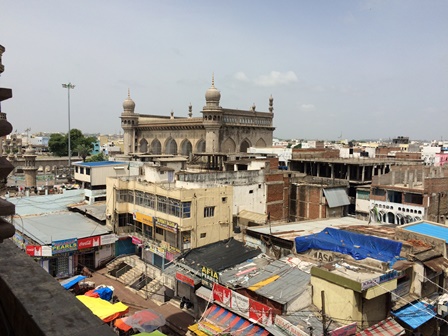
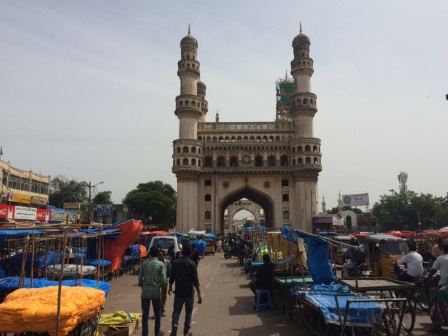
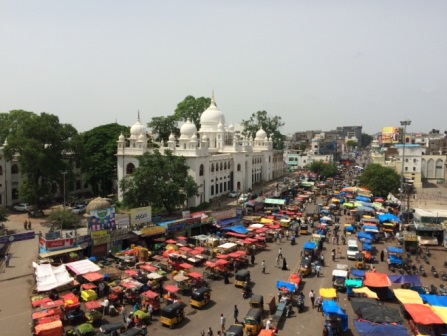
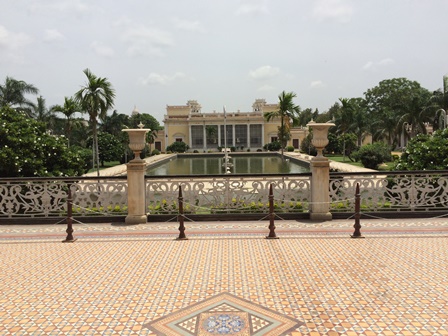
Hyderabad: Mecca Masjid, Charminar, Market place, Chowmahalla Palace
We are grateful, however, that Prof Ashok Johari organised a free day in Hyderabad, which allowed us to visit the sights of the city including the Charminar, a beautiful four-pillared arc of triumph, the Mecca Masjid, the major mosque and, Chowmahalla Palace, home of the Nizam, the former rulers of Hyderabad, with its beautiful architecture, gardens and its deep historical roots. Of course, during our taxi rides we could get a glimpse of the teeming life of Indian cities.
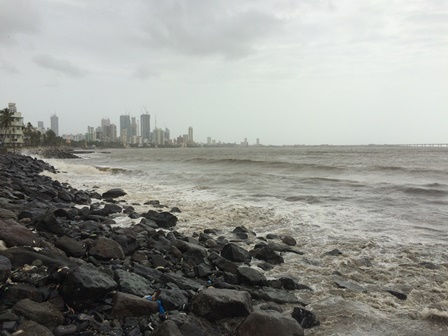 Mumbai | 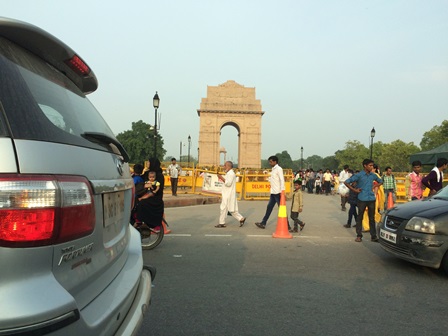 India Gate, Delhi |
Prof Johari is to be commended for his hard work in implementing this magnificent Road Show, a real tour de force, which reunited between 150 and 250 high level orthopaedic professionals at each stop. These surgeons were gathered in a very interactive learning experience and we must admit to being the first beneficiary of this exchange.
The Pharmasquire team was extremely efficient in the organisation of accommodation and travel. Although it was with some trepidation that we embarked on the OSTEC SICOT 2015 Road Show, the capabilities of modern India in terms of organisation, accommodation and logistics along with the camaraderie between foreign and local faculty made the trip a unique, unforgettable and more than worthwhile experience.
Programme Director's remarks
It was our pleasure to have Professors Hoffmeyer, Waddell and Biberthaler represent SICOT in the Road Show in 5 major cities in India. Though the travels were hectic, the 3 young men really enjoyed it as is shown in the pictures above. They imparted a lot in terms of education and gained a lot by way of warmth and friendship. Such trips are to be encouraged in different parts of the world as they allow experience and wisdom to be shared. The faculty gain a glimpse of the country they visit and live the culture and ethos as it were. Close to 800 Orthopaedic Surgeons across the vast length and breadth of India benefitted by the interaction and the programme was very well received. It upheld the banner of SICOT as a truly international society globalising orthopaedics and traumatology.
I must thank Pharmasquire for the logistics and the smooth running of the programme and Glenmark Pharmaceuticals for sponsoring the programme.
Ashok Johari


















